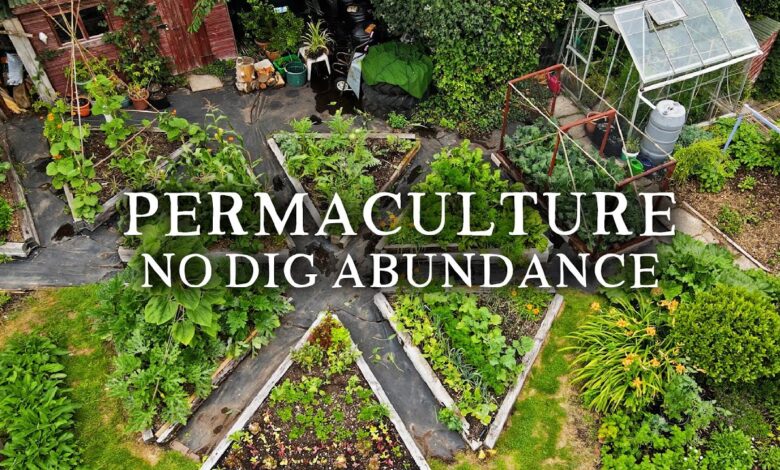Permaculture Garden: A Sustainable Approach to Gardening

Introduction to Permaculture Gardening
Permaculture Garden rre you tired of traditional gardening methods that seem to deplete the earth rather than nourish it? If so, it’s time to explore a revolutionary approach: the permaculture garden. This sustainable style of gardening goes beyond mere aesthetics; it’s a holistic system designed to work with nature instead of against it. Imagine creating a thriving ecosystem right in your backyard, where plants and animals coexist in harmony while providing you with fresh produce year-round. Embracing permaculture is not just about growing food—it’s about fostering resilience, enhancing biodiversity, and making a positive impact on our planet. Let’s dive into what makes permaculture gardening such an exciting journey toward sustainability!
The Basic Principles of Permaculture
Permaculture is built on a set of core principles that guide sustainable practices. At its heart lies the concept of working with nature rather than against it.
One fundamental principle is observing natural ecosystems. By understanding local conditions, you can create designs that mimic these systems, leading to greater resilience and productivity.
Another key aspect is diversity. Incorporating a variety of plants and animals enhances ecosystem health. It also reduces pests and diseases naturally, minimizing the need for chemicals.
The principle of closed loops emphasizes waste reduction. In a permaculture garden, everything has a purpose—composting food scraps enriches soil while rainwater harvesting conserves resources.
Embracing small-scale solutions fosters community involvement. Collaborative efforts often yield more significant benefits than isolated actions.
These principles form the backbone of creating effective permaculture gardens that sustain both people and planet alike.
Designing Your Permaculture Garden
Designing your permaculture garden is an exciting opportunity to create a space that works with nature. Start by observing the land. Look at sunlight patterns, water flow, and existing vegetation. This insight will guide your design choices.
Think about zones. Group plants based on their needs and how often you’ll interact with them. Herbs might thrive near the kitchen, while fruit trees can be placed farther away.
Consider layering for efficiency. Utilize vertical gardening techniques like trellises or wall gardens to maximize space and light exposure.
Incorporate elements such as compost bins or rainwater collection systems for sustainability. These features enhance biodiversity while reducing waste.
Don’t forget pathways! Create accessible routes that allow you to tend to your plants without disrupting their growth or health. Each element in your design should serve multiple purposes, enhancing both function and beauty within the garden ecosystem.
Choosing the Right Plants for Your Garden
Selecting the right plants is crucial for a thriving permaculture garden. Start by considering your local climate and soil conditions. Native plants often thrive better because they are adapted to the environment.
Think about diversity. A mix of perennials, annuals, and herbs can create a more resilient ecosystem. Companion planting enhances growth while naturally deterring pests.
Don’t forget about functionality. Choose plants that provide food, habitat, or other resources for beneficial insects and wildlife. For example, flowering herbs attract pollinators while leafy greens offer shade to neighboring vegetables.
Look into guilds—groups of coexisting plants that support one another’s growth. These combinations can maximize space and productivity in your garden.
Consider seasonal variety to ensure continuous yield throughout the year. This approach not only sustains your garden but enriches its biodiversity too.
Maintaining a Permaculture Garden
Maintaining a permaculture garden is an ongoing journey that adapts to nature’s rhythms. Regular observation is key; by watching your plants and soil, you can identify what works best.
Mulching is essential for moisture retention and weed suppression. Natural materials like straw or wood chips not only enrich the soil but also create habitats for beneficial organisms.
Pest management should rely on natural predators rather than chemicals. Encourage ladybugs and other helpful insects by planting diverse flowers nearby.
Rotate crops annually to prevent nutrient depletion in the soil. Each plant has unique requirements, so mixing them enhances biodiversity and resilience.
Embrace seasonal changes. Your garden will evolve throughout the year, offering new challenges and opportunities for growth every season brings its own beauty and lessons to learn from nature’s cycles.
Benefits of Permaculture Gardening
Permaculture gardening offers a myriad of benefits that extend beyond just food production. It promotes biodiversity, allowing various plants and animals to thrive together. This diversity creates a balanced ecosystem where pests are naturally controlled.
Water conservation is another significant advantage. Permaculture designs often incorporate techniques like swales or rain gardens, effectively capturing and utilizing rainfall. These methods reduce the need for extensive irrigation.
Soil health improves as well. Through composting and mulching, nutrients are replenished organically without synthetic fertilizers. This leads to healthier plants that require less maintenance.
Additionally, permaculture fosters community connections through shared knowledge and resources. Neighbors can collaborate on projects or exchange surplus produce, creating stronger bonds within communities.
Embracing this sustainable approach can lead to long-term environmental benefits while providing fresh food directly from your garden.
Challenges and Solutions in Permaculture Gardening
Permaculture gardening offers many rewards, but it’s not without its challenges. One common issue is managing pests naturally. Without chemical pesticides, gardeners may struggle with infestations that can damage crops.
One effective solution is to promote biodiversity. Introducing beneficial insects like ladybugs or planting companion plants can keep harmful species in check. This creates a balanced ecosystem.
Soil quality is another concern. Healthy soil is crucial for plant growth and productivity. To combat this, consider adding organic matter such as compost or mulching to improve fertility and structure over time.
Weather unpredictability also poses hurdles for permaculture gardeners. Droughts or heavy rains can disrupt fragile systems. Implementing water conservation techniques like rainwater harvesting or swales helps manage moisture levels effectively.
Learning from local conditions while adapting methods ensures long-term success in your permaculture garden journey.
Conclusion: Creating a Sustainable Future with Permaculture Gardens
Creating a sustainable future with permaculture gardens is not just a possibility; it’s an inviting reality. By embracing the principles of permaculture, gardeners can cultivate spaces that thrive on biodiversity and resilience. Each garden becomes a micro-ecosystem that supports local wildlife while providing nourishment for our communities.
The journey into permaculture gardening invites you to rethink traditional practices. It encourages harmony with nature rather than dominance over it. As we design our gardens thoughtfully, selecting plants that work well together and supporting soil health, we move closer to sustainability.
Every small step counts in this endeavor—whether you’re planting native species or using organic compost techniques—and these efforts can lead to significant changes over time. The benefits extend beyond individual enjoyment; they ripple through the environment and society as a whole.
With imagination and determination, anyone can contribute to this growing movement. Permaculture not only enriches our lives but also paves the way toward healthier ecosystems for generations to come. Together, let’s nurture our planet one permaculture garden at a time.



